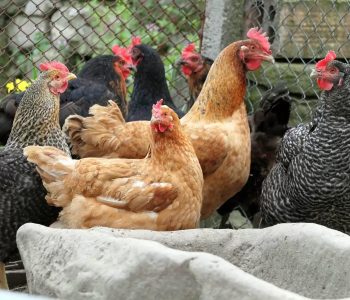Introduction:
An investigation conducted in Argentina has shed light on the correlation between feeding programs for slow-growing broiler breeders and the color of eggshells. The color of eggshells is identified as a crucial factor influencing shell resistance and hatchability, making it a key indicator in poultry production.
Inconclusive Evidence:
Despite inconclusive scientific evidence in poultry studies regarding the relationship between eggshell color and hatchability, there is a common assumption that eggs with more intense colors have higher fertility and hatchability percentages during incubation.
Research Collaboration:
A collaborative effort between the Universidad Nacional del Nordeste (UNNE) and the Instituto Nacional de Tecnología Agropecuaria (INTA) sought to evaluate the impact of different feeding programs on the color of fertile eggs in slow-growing breeding hens, a prevalent genotype in the region.
Study Details:
The trial took place at the Bird Multiplication Center of the INTA Corrientes Agricultural Experiment Station, involving 300 breeding hens from the “T6” synthetic maternal population. The birds were divided into control and experimental groups, each receiving distinct diets. A total of 1742 incubated eggs from the control group and 1565 from the test group were collected and classified by color.
Observations:
The study revealed a non-uniform distribution of egg color in both treatments. The control group exhibited a lower percentage of white eggs and a higher proportion of medium and dark-colored eggs compared to the untreated group. This observation suggests that increased nutrient allocation during the rearing stage positively impacts hatching egg quality in the slow-growing genotype.
Author Insights:
Aranzazú Grossi, a UNNE research fellow, and Dr. Fernando Revidatti, project director and teacher-researcher at the UNNE Faculty of Veterinary Sciences, emphasized that the findings indicate improvements in hatching egg quality due to enhanced nutrient allocation during the rearing stage. Previous studies on other genotypes supported the positive correlation between deeper eggshell color and shell characteristics like strength and hatchability.
Conclusion:
The collaborative study by UNNE and INTA concludes that different nutrient allocations during the rearing phase significantly influence the color of eggshells in slow-growing genotypes, contributing valuable insights to poultry production practices.
Scientific Impact:
The publication highlights the ongoing efforts of the Poultry Production Chair at the Faculty of Veterinary Sciences, UNNE, in conducting basic and applied research related to laying and breeding hens. The collaborative actions with producers, companies, and scientific institutions in the region underscore the importance of generating scientific knowledge about genotypes used in Argentina, particularly in the local context, to foster the growth of this productive activity.
Source: UNNE
You may also like to read: “Soybean Origin Segregation in Poultry Feed: A Precision Nutrition Approach”
